Repair process of large Encaustic Paintings
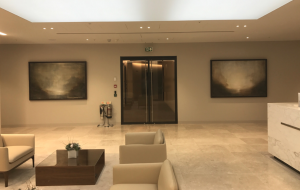
Hiro Yokose repaired paintings
I had the privilege to be asked to repair two encaustic paintings in the autumn, which proved to be one of the biggest challenges I’ve encountered yet. Read on here for the full story, and details of the repair process. For the background story to this blog, click here…
After lengthy discussions over the phone, we agreed a course of action and I would see what I could do.
I had to wait for someone to come in and help me lay the painting down flat, (two person job) then the attempted repairs began….!
These paintings had been created in a very different style to those I normally do, they had been painted in oil on canvas, then clear wax was painted, or poured over the top to give them an ethereal feel. Luckily, this made the repair slightly easier, as I didn’t have to worry about colour matching, however, it provided an alternative headache I hadn’t anticipated…
The clear wax, when heated, to re-fuse and repair the cracks and damage, turned completely white… I could not see anything of the painting underneath, so was in effect working completely blind. Only when the wax cooled and went clear again, about five – ten minutes later, and was buffed, could you tell if it had fused sufficiently according to how much of the crack / damage remained. Here are some consecutive pictures of the same cracked area…
Edge damage and crack quite visible…
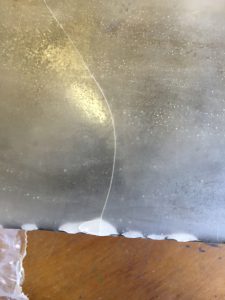
First fuse – gently melted the wax, and it goes very cloudy in colour.
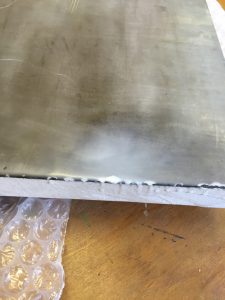
Wait for it to cool, you can see the long crack has started to repair, but edge damage needs more work.
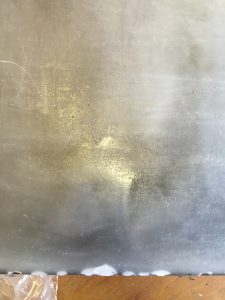
Another fuse, gently manipulating wax, but without pushing too hard and doing more damage.
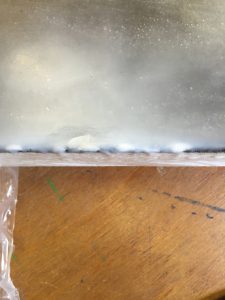
It’s a waiting game, what’s it going to look like… Yikes, will it EVER return to its correct colour…?!!!
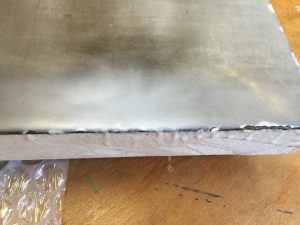

Cooled and buffed, crack and edge damage gone… Yay….!
(The white area is light reflecting off the wax, really difficult to photograph)
Additionally, the canvas was not adhered to the wooden board underneath, therefore, as the wax was heated, the canvas would swell, rise and bubble up away from the support, so, working blind, with a moving painting, was not an easy job, and definitely not for the faint hearted. My nerves only allowed me to work a small section at a time…!

Here’s a short video I made for the owner, where I talk through the repair progress of the first painting…
It took quite some time to get them repaired, it was slow and painstaking work, and as suspected the second painting behaved in exactly the same way once unwrapped, but it was so rewarding watching them knit back together as I eliminated and repaired the cracks and dents, and buffed out the scratches on the surface.
As they were nearing completion, the subject of framing came into discussion. Here we hit another stumbling block, as none of my usual framing contacts were set up to handle paintings of this size, or, they could do them, but were on a turnaround of five+ weeks.
Many of the framers operate in large busy warehouse conditions, not heated at night, and frankly, I was getting twitchy at the thought of potential sub zero winter temperatures.
All these communications were rolling from days into weeks, I had open days, workshops and birthday parties booked at my studio, just the sheer size and presence of them was enough to have me pleading… “Please don’t go near those…!”

They had kind of become my babies; they were in my charge. I’d invested many hours, and had many a sleepless night over them, and I wouldn’t be happy until I knew they were safely returned from my ‘watch’… I wanted them framed, and back, in their nice warm office, hanging safely on the wall out of harms way…!
Discussing my framing dilemma with my husband one evening, he reminded me of a data cabling job he had done at an art framing company, called ‘John Jones’ in London a few months earlier, he had said at the time that I’d have LOVED it there.
Hurrah for serendipity… John Jones were GREAT… **Sadly they have now closed for business.** Their client base was second to none, they specialise in museum standard fine art framing, if I could, I’d definitely use them again for complex jobs such as this.
Anyhow, the paintings left my studio at the end of November, and although I knew I’d kept my end of the bargain up, I kept wondering over Christmas how they were getting on, what was the framing job like, was my client happy with the result, would I have been happy with the result…? As I said, I’d become a little bit attached…!
You can imagine how pleased I was when I received the following photo and e-mail in the New Year…
“I just want to say how pleased I am with the encaustic restoration work you carried out. The paintings are now framed and hanging in our reception and they look superb. Definitely worth the wait and the effort. I attach a photo of them now they are hung.”
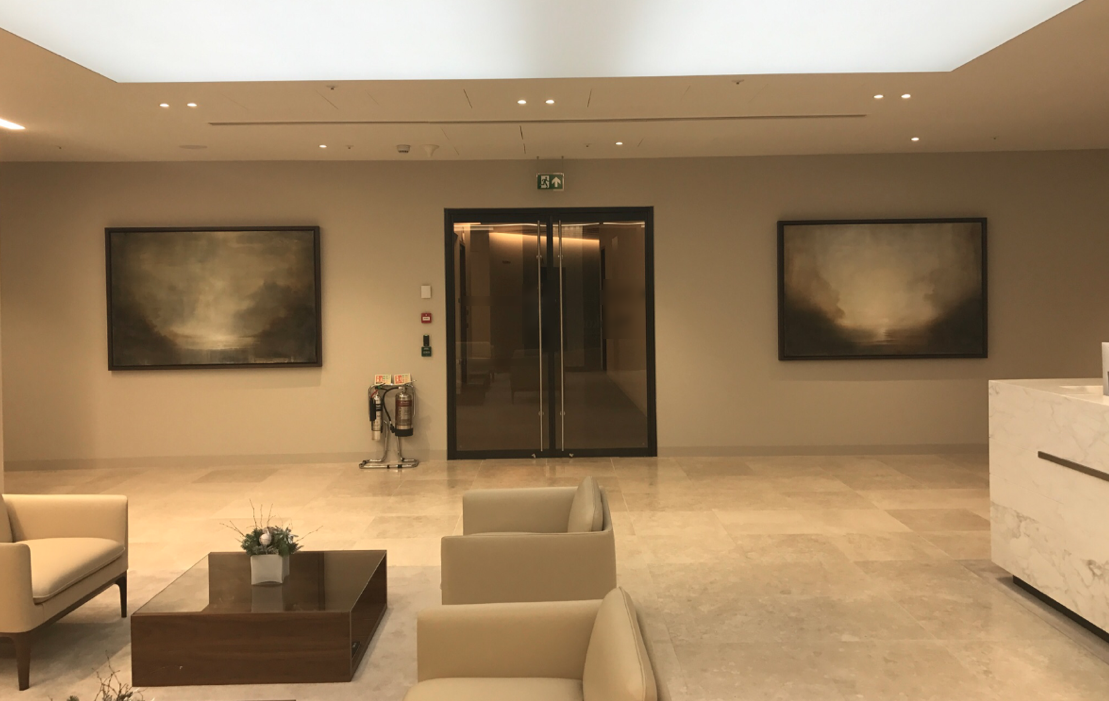
Hiro Yokose repaired paintings
YAHOO…!!! Closure…
Next time I’m in London, I might just pop in and take a peek…!
**UPDATE – NEW ENCAUSTIC REPAIRS ONLINE COURSE**
After a slow trickle of enquiries about repairs of encaustic wax work, as a result of blogs such as this one, especially from people overseas, where it’s not possible to ship the painting to me for repair… I have created a new resource, which should guide you through the process to repair your own painting. See full details here.
I hope you find it helpful….




[…] If you want the long version of events, including a video and more details of how the repair and fra… […]